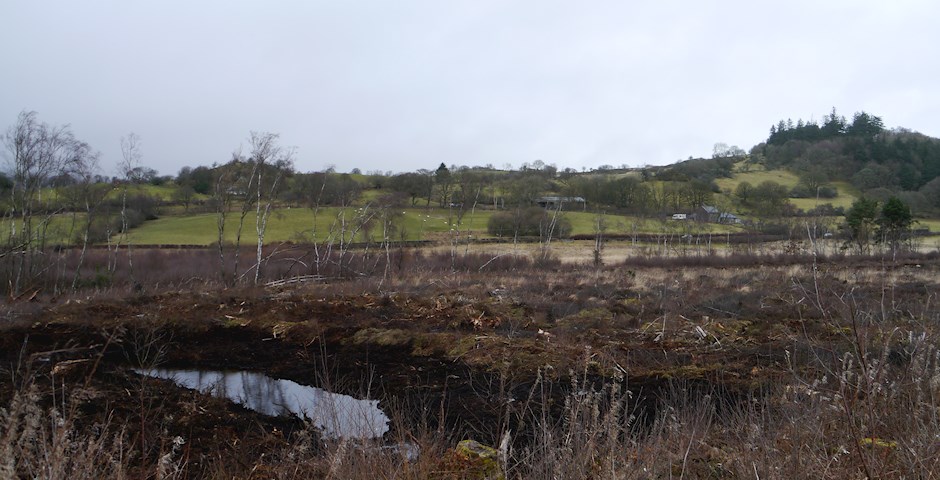
Cors-y-Sarnau, Wales (UK)

North Wales Wildlife Trust have continued to carry out their restoration work at Cors-y-Sarnau through the winter of 2022/23, focussing on the restoration area at Coed Tŷ Uchaf where the main goal is to reduce water from the bog into the adjacent drainage channel. As they continued to refine their restoration plan it became apparent that installing a series of individual dams would be technically challenging and unlikely to create an effective flow barrier, due to the narrow spacing of ditches and the heavy concentration of tree stumps and roots throughout the restoration area.
Instead, a low-profile contour bund was designed to be installed along the north-western edge of restoration area. This would create a continuous barrier to both ground- and surface-water flow. Using their Digital Surface Model of the restoration area, they were able to find a location for the bund which would maximise water retention; a 500m-long bund was designed that affects approximately 3 ha of the restoration area and will hopefully raise the water table 20-30cm in the central area, bringing water levels within 30cm of the surface throughout the year.
One of the other concerns that had been raised following the hydrological survey of Cors-y-Sarnau was the influx of nutrients into the restoration area from adjacent agricultural land. Four ponds were therefore also included in the restoration plan, designed to intercept the main run-off. Typha will be transplanted into the ponds during 2023 to help remove nutrients.
The bund installation and pond creation was carried out in February 2023. Taking the time to meet with a range of contractors and discuss the work prior to getting formal quotes was essential to make sure that they were familiar with the site, understood the scope of work and technical specifications, and would be able to bring the right equipment for the job. In the end, the contractors they appointed had significant experience with creating bunds on peatlands and completed all of the ground works in just four days!
Groundwater levels already appeared to show a slight increase after a couple of weeks, and water is visibly being retained behind the bund. North Wales Wildlife Trust will be monitoring water levels throughout the year to see how effectively the bund is improving the hydrology. Are ground water levels remaining higher and are they more stable? With this information, we will then be able to review the hydrology of the restoration area and determine whether additional hydrological repairs would be beneficial.
With the main hydrological restoration works out of the way, they are now looking at establishing a grazing regime on the restoration area. Grazing should help to restrict the spread of Molinia, heather and birch saplings which are strongly established in the drier parts of Coed Tŷ Uchaf. The installation of grazing infrastructure is being planned for spring and summer 2023, to allow stock to be moved on later in the year.
https://www.northwaleswildlifetrust.org.uk/care-peat-cors-y-sarnau
